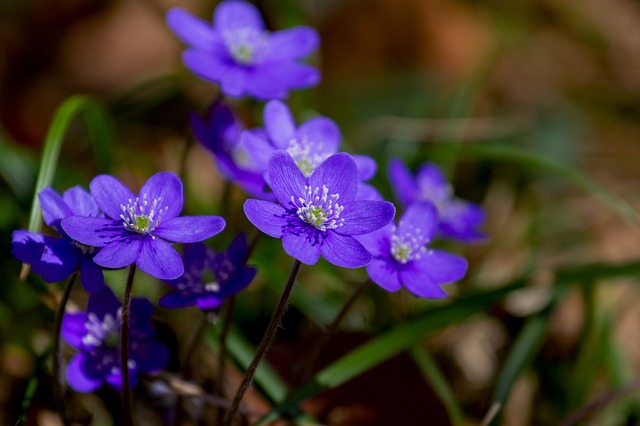 |  |  |  |  |
 |  |
The Liverleaf is a perennial plant that can reach a height of 5-15 cm. The rhizome is dark brown, on the surface of which are stretched oval, brownish scales.
Stems are arrow-shaped, which are located in the axils or scales of last year's leaves. Erect, slightly arched, finely, most often, densely pubescent. The coat is reddish or brown.
Root leaves, numerous, leathery, wintering, arranged on long petioles. Kidney-shaped or broadly triangular, heart-shaped at the base, three-cleft to the middle with broadly ovate, obtuse or pointed lobes. Dark green on top, violet shade on the bottom. While the leaves are young, their petioles and the leaves themselves are covered with dense, soft, silky hairs. Leaves begin to develop after the plant flowers.
Flowers solitary, upright, up to 2 cm in diameter. 6-7 petals, short oval, rounded at the ends, bluish violet (paler at the ends), rarely white or pink. Blooms in April-May.
Fruit - an elongated, hairy seed.
In fresh form, the Liverleaf contains substances that irritate the mucous membranes, so the plant is collected using rubber gloves. During drying, these substances partially decompose. The drug is stored separately from other medicinal drugs. Drying is carried out in a well-ventilated place or in a forced dryer, at low temperatures.
The finished drug is stored in tightly sealed containers for no longer than 18 months.
The chemical composition of Liverleaf is diverse. They contain many microelements, which have different effects on the human body and microorganisms.
All parts of the plant contain coumarins. Saponins (such as hepatisaponin and hepatitrilobin) and flavonoids (3-glycoside quercetin, 7-glycoside quercetin, 3-glucoronide quercetin) have also been found in the leaves. The flowers contain flavonoids such as 3-glucoside hempferol, 7-glucose and 3-7 diglycoside hempferol, as well as the 3-glucoronide hempferol.
The plant also contains anemonal - camphor with a sharp taste. As a result of its decomposition, one of the heart's poisons is produced - anemonin.
Tannins, anthocyanins and pigments are also found in Liverleaf.
Medicinal significance
Liverleaf stimulates the release of bile and stabilizes the activity of the gallbladder. The plant enhances diuresis and has a pronounced antiseptic effect.
There is a prevailing opinion that the dried drug no longer retains its poisonous substances, because it basically disintegrates during the drying process. However, although the medicinal properties of the Liverleaf are extensive, it causes considerable damage to the mucous membranes. Therefore, the use of this plant is permissible only under the guidance of a specialist.
The Liverleaf is able to stop the rotting processes of infected wounds, get rid of furunculosis and acne, relieve the pain of rheumatism and polyarthritis. External use of this plant can localize skin diseases caused by staphylococcus.
The anti-inflammatory effect of the Liverleaf allows it to be used in poultices and applications, for the treatment of complex diseases caused by staphylococcus and streptococcus, to purify the blood composition, as well as to use it as a stimulant for the liver and gall bladder.